
Today’s sad e-kid and yesterday’s comic kid understand the gripping power of a fantasy world full of clashing contradictions. Darkness against Light, villains against heroes, the archetype of internal rage personified – and the comic kids identify with whichever primeval forces narrate their lives best.
Into this fray comes a dorky violin goddess, telling us that we can avoid the opposite mistakes of trying to eradicate the darkness within us and allowing it to call the shots, inviting us to participate in the work of enhancing reality with the power of imagination.
Yesterday I opened up the cardboard mailing envelope containing my order from Lindsey Stirling’s merch site, the graphic novel companion of her album Artemis.
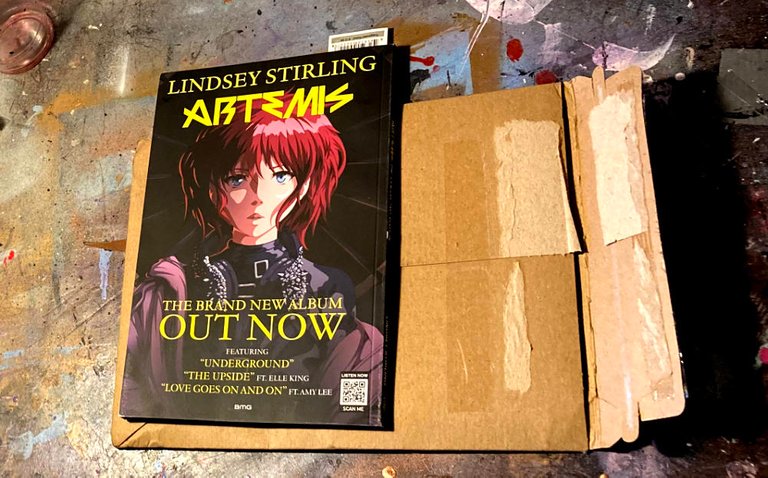
Stirling herself is credited as the primary author and creator of these six comics, which are combined in the graphic novel, where they are labelled as chapters. (Some of the individual comic issues are presently out of stock on the merch site.)
Stirling shares creative credit with other artists, including producer Jason Badower, flats artist Anna Marie Navaja, and figure artists wataboku, Celtis, and Yato. This diverse cast of creators might explain the tasteful hybrid aesthetic. The graphic novel is not quite a manga, but it is not a Western superhero comic either. A little bit both of the visual style and the subjective creative vibe of both of those genres are mixed here, making this book a fitting companion to Stirling’s eclectic and broadly inspired musical style.
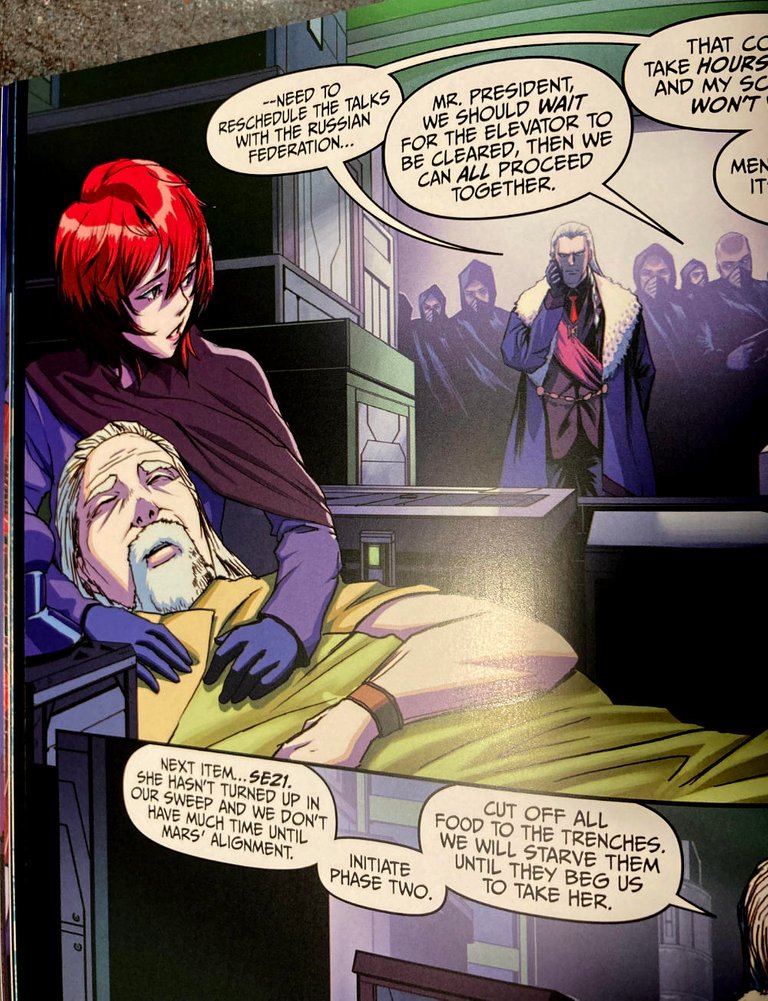
The coloring of the world depicted through the art brings out the dual fantasy and cyberpunk sci-fi genre elements in the story. The character art is energetic and endearing and detailed enough to identify the main character with Lindsey’s face, though both the level of detail and style vary from chapter to chapter.
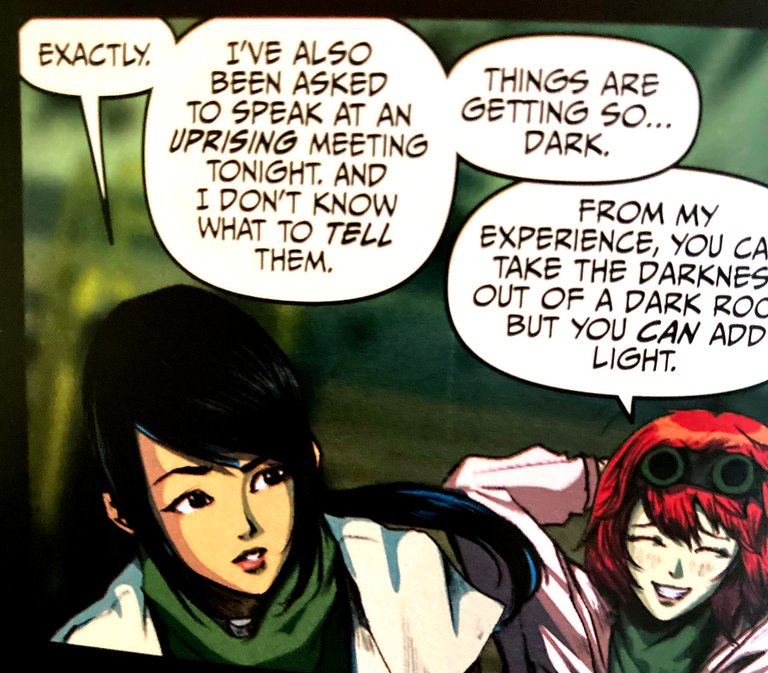
The differences in the figure art for the characters over the course of the graphic novel are rather significant. This is understandable, especially given that the graphic novel is really a series of separate comic issues. It plays to one of the strengths of the comic genre, creating a sense of mythic mystery within its campy energy, a sense that these superheroes are archetypes who could be anyone. Yet I would have preferred more regularity in the character design.
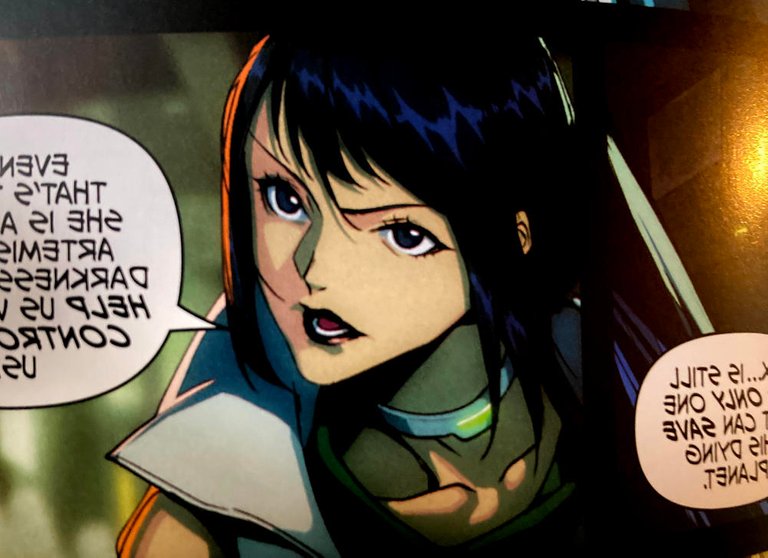
The legendary YouTube musician has built her presence as an artist into the multi-faceted Artemis project, an ambitious augmented reality project that makes the grand accumulation of the artist’s accomplishments tangibly real. The main character of the comics is clearly one of Stirling’s many virtual avatars, illustrated with her facial features and the raggedy e-kid aesthetic that she perfected in her early popular music videos. The character turns out to be a stand-in not only for Lindsey, but also for Lindsey’s direct audience – direct audience, because Lindsey is mainstream now and just about everyone of all ages loves her, yet her media seems to be spiritually designed for the sad, socially displaced youth of the Internet era. To a generation of sad Internet indie kids, Stirling represents the pinnacle of success and validation.
The comic story is about duality. The plot is structured as a dual story, using the dream story device. When the ghetto street kid protagonist falls asleep in her grimy totalitarian world where she is named only “SE21,“ she is living in mythic Arcadia as the goddess Artemis. The duality turns out not to be a simple distinction of a fantasy within a frame story; instead, the plot develops a genre relationship between the cyberpunk and the mythpunk. This genre milieu turns out to become an internally coherent fictional synthesis, a glimpse of a fantasy world in which to present the soul of Lindsey Stirling’s prolific creative output.
The graphic novel curates a selection of Stirling’s music tracks and videos to be appreciated while handling the book or the comics. QR codes at particular points in the narrative art boards invite readers to open various Lindsey content on their smartphones. Not all of content linked with the QR codes comes from the recent Artemis album, but the music videos for the Artemis songs are theatrically visualize parts of the same story. The links either open YouTube in the web browser or Spotify. Ambient music to set the mood for the scenes while reading makes sense, although some of the linked music is lyrical, which can be distracting.
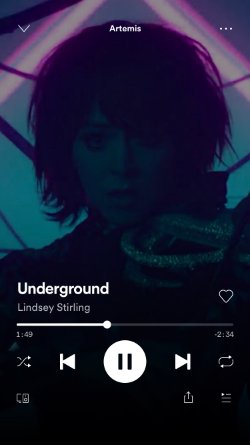
The plot is less coherent than the fantasy setting, serving mostly to offer the opportunity for abundant comic book style comebacks and character beats. The story is small and character driver, building on top of itself as the reader advances through the series of six comics. The revelations shift the experience of the setting a little bit over time as the basis in Greek mythology comes through, but the world never feels much larger than the cast of characters.
All the tough hardened people of this cyberpunk dystopia are portrayed as one big neighborhood. Even when supporting characters sell out the main cast, the story never paints anyone with too much antipathy. The cast is more oriented around women then men, the major supporting character being a secondary heroine. There’s a generic unity plot, with bickering factions needing to set aside their quarrels to fight the big bad.
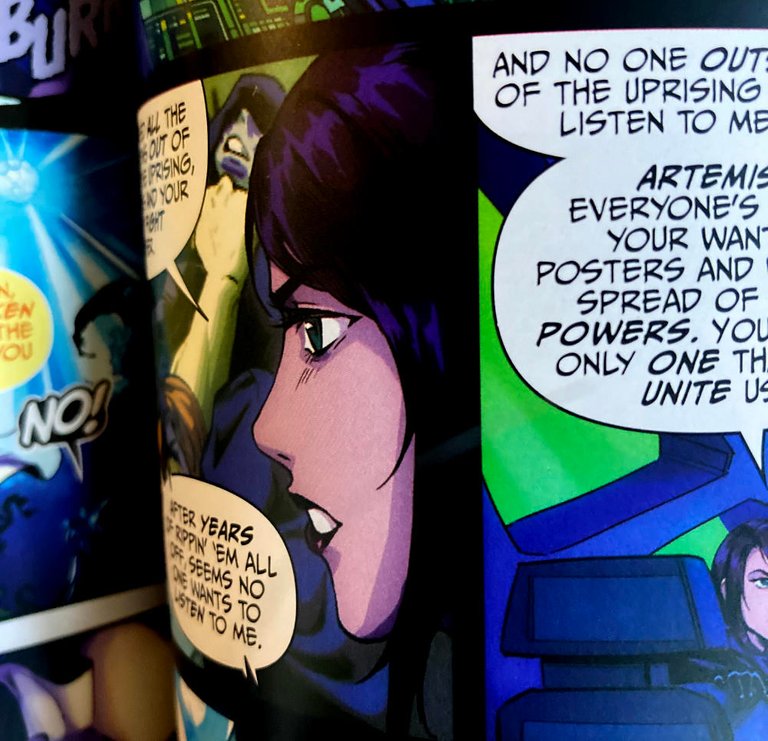
There’s a scene early on where the two heroines, who are childhood best friends, are hanging out at neighborhood bar while a political meeting is going on, and they start arguing publicly. They draw the barman and the other hometown buddies in as leverage in their disagreement, each trying to knock the other down slightly. That scene has a QR link for the for Stirling’s classic Roundtable Rival music video.
There’s much to said for the value of friends who are able to trade a few punches, even hard ones, and then still carry on to do the great things that their friendship revolves around. This subplot in the Artemis graphic novel is more complicated than that, but it illustrates another theme that the dialogue pointedly emphasizes at other points.
The authors go out of their way to comment on the perseverance of the soul through change, and even because of change. This is a fitting theme for the magnus opus of the indie artist who succeeded in a way in which other successful artists often fail. Lindsey is the one who didn’t lose her soul. She accomplished what nearly every indie, alternative, or hardcore artist has ever aspired to do; that is, she achieved red carpet success without selling out her personal artistic expression to the demands of the mainstream. Here is an artist who has thoroughly lived out her own values in the midst of the public and the pressures of the elite while working without judgment beside others who have not shared her lifestyle. SE21 has a comparable “red carpet” moment within the graphic novel, and the distinction between the fame of the elite and the fame arising from natural authenticity is well depicted.

The multi-media Artemis project shows how an artist’s vision can be brought forth so powerfully and materially, combining the craft of fantasy fiction worldbuilding with the gripping character energy of the graphic novel format and the augmented reality of digital integration. We need genuine artists like Lindsey Stirling to show us how to build this augmented future, because artists are those who manifest dreams into reality through struggling with human nature.
The chaotic clash of the Darkness and the Light has held still long enough to be painted into our graphic art.

Your content has been voted as a part of Encouragement program. Keep up the good work!
Use Ecency daily to boost your growth on platform!
Support Ecency
Vote for Proposal
Delegate HP and earn more
Congratulations @strivenword! You have completed the following achievement on the Hive blockchain and have been rewarded with new badge(s) :
Your next target is to reach 700 upvotes.
You can view your badges on your board and compare yourself to others in the Ranking
If you no longer want to receive notifications, reply to this comment with the word
STOPCheck out the last post from @hivebuzz: